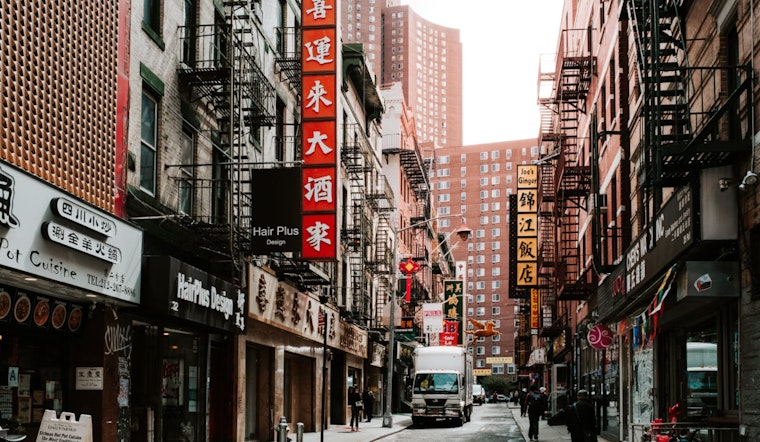Hulu’s “Interior Chinatown,” set against the vibrant streets of Manhattan’s Chinatown, is a tapestry of tiny enterprises and cultural legacy that tells a deeper story than what is shown on film. The show reflects the genuine energy of this historic neighborhood as it follows the fictional life of Willis Wu, played by Jimmy O. Yang. In an interview with ABC7NY, Yang expressed gratitude for the show’s emphasis on “the real lives of these people that live in Chinatown and rely on the community.”
In addition to the entertainment, the women-owned and minority-owned company Mott Street Girls provides excursions that explore these busy areas and reveal the histories of well-known small businesses. According to tour guide Chloe Chan, “As tour guides, as ambassadors to our community, we really try to preserve the stories, as well as let more people learn about them.” Chan highlights the significance of conserving Chinatown’s stories. According to ABC7NY, the actors and crew encourage Chan’s tours, which highlight popular local locations like Joe’s Shanghai and New Top Jewelry, both of which are praised for their contributions to community identity.
In the meantime, a New York Times story claims that the intricate sets of “Interior Chinatown” vividly depict stories from Charles Yu’s original book. The settings of the books are transformed into three-dimensional spaces that are essential to the meaning of the story in the Hulu series. The settings, which are as much a part of the characters as the players themselves, vividly depict an Asian-American experience, whether it is the well-known hustle and bustle of Willis’s employment, the Golden Palace Restaurant, or the private mess of his mother Lily’s (Diana Lin) apartment.
Every setting in the series has two functions: it explores the people’ inner lives while encapsulating the spirit of the outside Chinatown. The creator of the show, Charles Yu, clarified the idea, “it was like, how do you build a place that feels real and lived in and at the same time can feel subjective and evocative of the Chinatown that comes from the novel, which is an interior Chinatown that functions as a place where people work and live, but also as a mental space?” According to the New York Times, his vision is brought to life by the careful details created by director of photography Mike Berlucchi and production designer Kate Bunch, who painstakingly recreated components from real Chinese restaurants to give the scene a realistic feel.
All things considered, “Interior Chinatown” is a cooperative work that embraces the cultural diversity of its real-world equivalent in New York City while honoring the narrative texture of its source material. Viewers can interact with a narrative that is both entertaining and educational, offering a contemplative glimpse into the many lives tucked away in the center of one of Manhattan’s most vibrant neighborhoods, when the series is available for full streaming on Hulu.
Note: Every piece of content is rigorously reviewed by our team of experienced writers and editors to ensure its accuracy. Our writers use credible sources and adhere to strict fact-checking protocols to verify all claims and data before publication. If an error is identified, we promptly correct it and strive for transparency in all updates, feel free to reach out to us via email. We appreciate your trust and support!



Leave a Reply